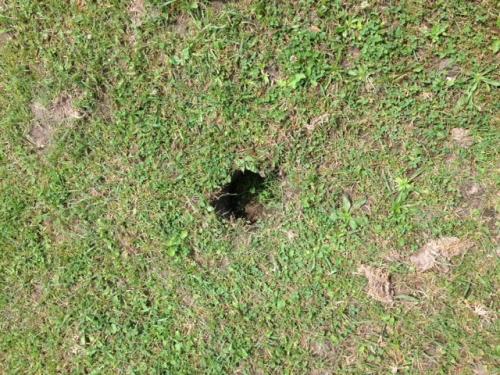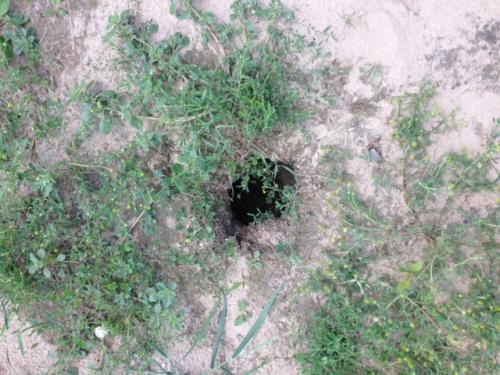Walk pastures to identify hazards
Walking pastures periodically to identify hazards will reduce risk of injury to your horse.
Summertime is upon us and horses have been turned out to pasture now for a few months. Many horse owners may have experienced a time when a horse comes in from the pasture and you observe some sort of injury (scratch, cut, swollen leg, etc.) to the horse and you are perplexed as to how the horse may have injured itself. It is important to recognize that pastures will change throughout the season and hazards that were not present in the spring may now be present. So, this raises the question, have you walked your pasture lately to identify potential hazards?
Hazards can range from toxic weeds to tree limbs with wilted leaves that have fallen on the fence, to a leaning fence post to even ground hog holes. The following photos illustrate ground hog holes recently discovered in two different horse pastures. If a horse accidentally stepped into a hole such as this, injury could be very serious and possibly fatal.


Michigan State University Extension recommends walking your horse pastures periodically to identify hazards that could injure your horse. As illustrated in the pictures above, some hazards may not be easily seen from a distance. Therefore, it is imperative to be thorough and walk the whole pasture in a zigzag pattern. When making a walkthrough of the pasture, it is a good idea to document where the hazard is located in the pasture if you have to return to remove it. This could be done a variety of different ways but most notably by taking notes or marking it with colored tape or flags.



 Print
Print Email
Email

